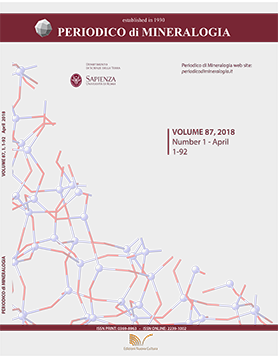U–Pb zircon ages, geochemistry and tectonic setting of felsic and mafic intrusive rocks of Almogholagh complex, NW Iran
DOI:
https://doi.org/10.2451/2018PM761Keywords:
U-Pb zircon geochronology, Almogholagh complex, Sanandaj-Sirjan zone.Abstract
The Almogholagh Complex is a part of Sanandaj-Sirjan Zone that outcrops in the northwest of this zone and contain felsic and mafic rocks. LA-ICP-MS zircon U-Pb age of felsic rocks between 148 to 143 Ma. The felsic rock, which shows a high-K calc-alkaline affinity, enrichment in LREEs compared to the HREEs and the high values of Yb and Y, low Sr, and negative Eu anomaly imply that source is within the stability field of plagioclase. High SiO2 and low MgO contents in felsic rocks suggest that the mantle cannot directly produce this magma while the intergrowth texture of K-feldspar and quartz implies crystallization around the K-feldspar-quartz eutectic at lower temperatures. It can be concluded that the high-K felsic rocks did not originate directly from the mantle source, as do most I-type, calc-alkaline granitoids, but more likely originated from the partial melting of pre-existing I-type granitoids in the upper continental crust under low-pressure conditions.
Considering the low Yb and Y concentrations, a high Sr, a very weak anomaly in Eu, and a slight enrichment in LREEs compared to the HREEs in mafic rocks, it can be concluded that the origin of the magma is related to the stability field of garnet. Geochemical characteristics of mafic rocks show that their origin is associated with island arc of subduction area. Although the geochemical and magma relationships between the felsic and mafic rocks cannot be documented, emplacements of these intrusive rocks show distinct different trends in Neotethys subduction basin.


